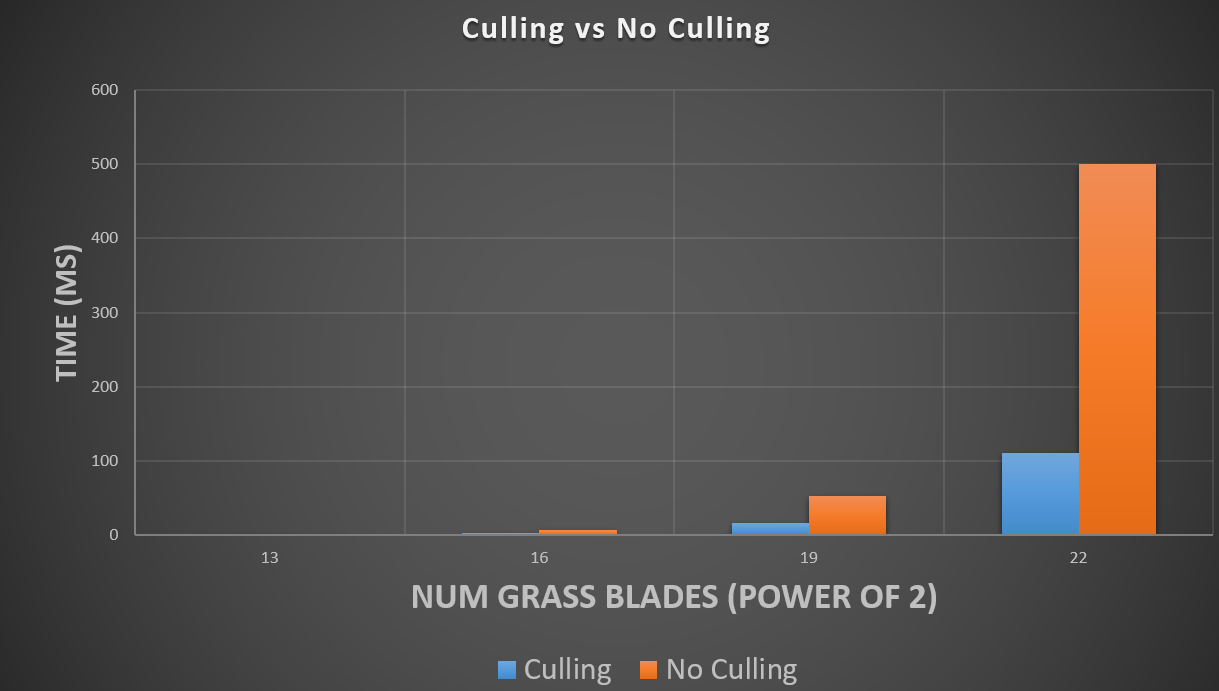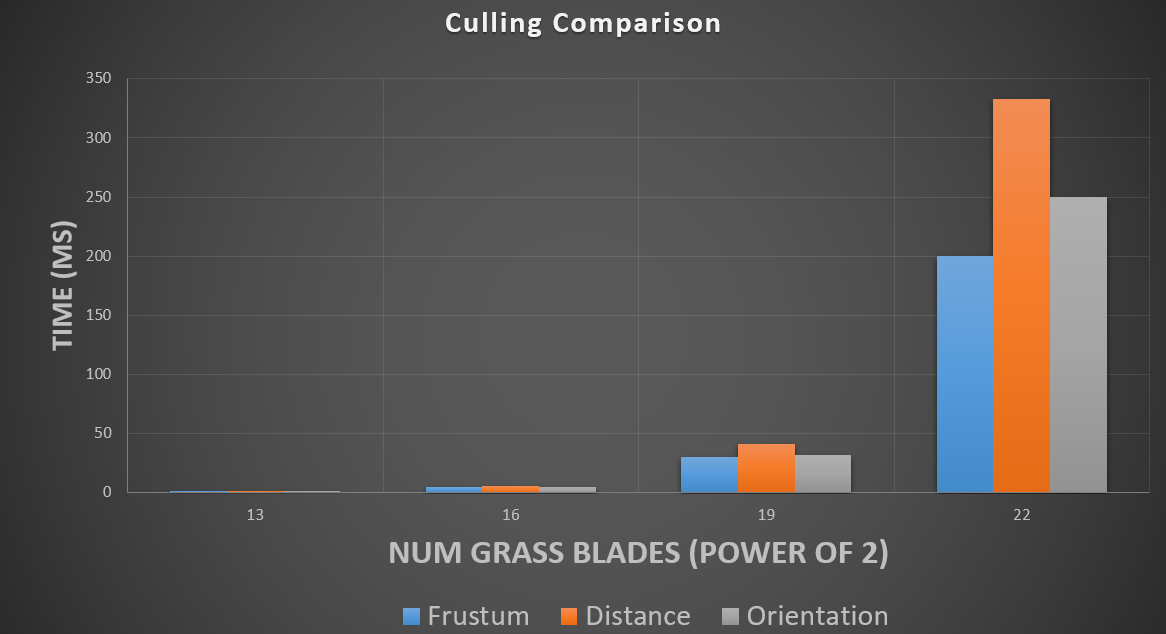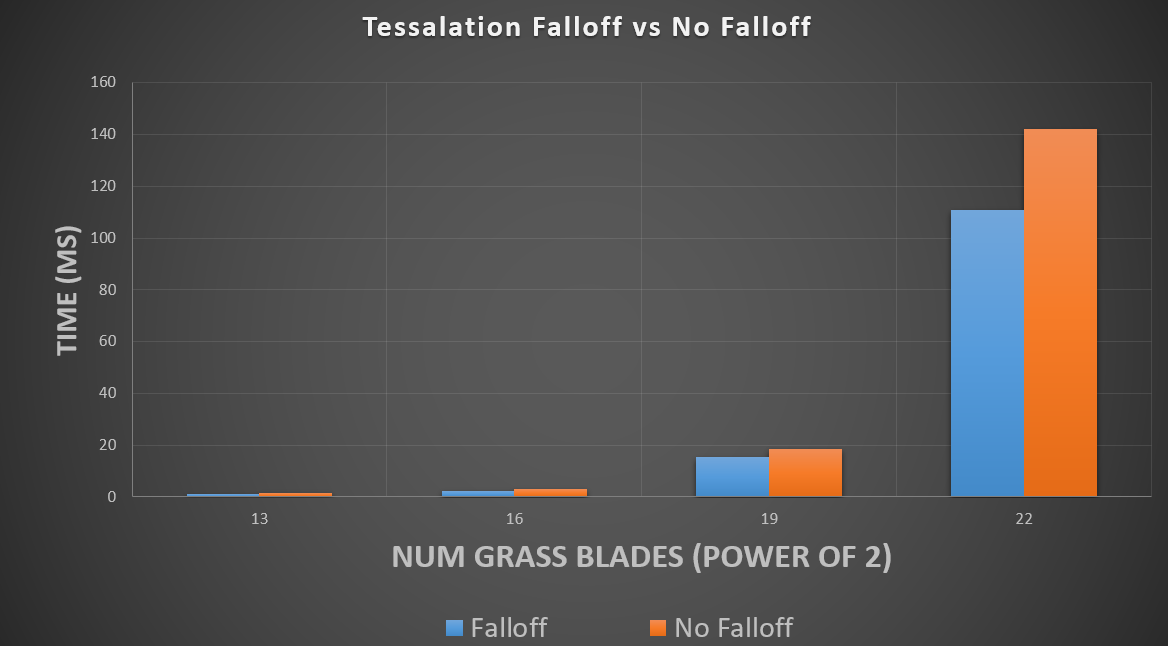University of Pennsylvania, CIS 565: GPU Programming and Architecture, Project 6 - Vulkan Grass Rendering
- Josh Lawrence
- Tested on: Windows 10, i7-6700HQ @ 2.6GHz 8GB, GTX 960M 2GB Personal
Overview
For implementation details see:
https://www.cg.tuwien.ac.at/research/publications/2017/JAHRMANN-2017-RRTG/JAHRMANN-2017-RRTG-draft.pdfs
For tesselation details see:
http://in2gpu.com/2014/07/12/tessellation-tutorial-opengl-4-3/
http://prideout.net/blog/?p=48#levels
Highlights
Several culling optimizations were used to reduce computation cost: orientation culling, frustum culling and distance culling. To reduce triangle count, tesselation level is reduced the further the blade is away from the camera. Performance comparisons between culling techniques are sensitive to the setup of the scene but provide insight into how much work is being removed by these culling techniques. For the scene provided frustum culling was the most effective at improving performance, followed orientation, then distance. This makes sense as frustum culling excludes most of the scene from the computation. Orientation and distance are still doing work for grass blades that don't show up on the screen and are more scene dependent. Distance could be more effective than orientation for very large scenes but for the scene that was rendered this was not the case. Tessaltion falloff based on distance from camera has noticable performance improvements when there are large numbers of grass blades to render but for realstic amounts of grass, it's not that useful.
Performance improvement due to all culling techniques

Performance comparison between culling techniques

Performance comparison between tesselation falloff vs no falloff

GPU Device Properties
https://devblogs.nvidia.com/parallelforall/5-things-you-should-know-about-new-maxwell-gpu-architecture/
cuda cores 640
mem bandwidth 86.4 GB/s
L2 cache size 2MB
num banks in shared memory 32
number of multiprocessor 5
max blocks per multiprocessor 32
total shared mem per block 49152 bytes
total shared mem per MP 65536 bytes
total regs per block and MP 65536
max threads per block 1024
max threads per mp 2048
total const memory 65536
max reg per thread 255
max concurrent warps 64
total global mem 2G
max dims for block 1024 1024 64
max dims for a grid 2,147,483,647 65536 65536
clock rate 1,097,5000
texture alignment 512
concurrent copy and execution yes
major.minor 5.0


